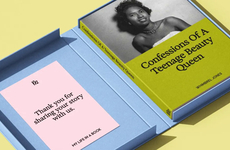
Tisah Tucknott — August 7, 2009 — Business
References: margaretleroy
Even as a child, Margaret Leroy immersed herself in writing fantasy stories that she would keep to herself. This creative genius stopped writing for several years and attended St. Hilda’s College, Oxford University to study music.
After trying many things in the field of the arts, Margaret Leroy started writing again. Her latest book, “Yes, My Darling Daughter,” was a favorite of Oprah’s, as it will surely be for many others.
3 Questions With Margaret Leroy
1. How do you keep your work on the cutting edge?
A book takes a long time to write, and something that seemed to be on the cutting edge when you thought of it may feel out-of-date three years later when your book hits the bookshops. So I never try to guess what other people might want to read. I write about things that move or fascinate me--and hope those things will also move or fascinate my readers. It’s a thrilling moment when an idea comes to you, and you feel a kind of certainty--“I’m going to write about that.”
2. How do you reset yourself to become creative? Do you have any rituals?
Silence is crucial--I’m addicted to noise-reduction headphones. I write in bed, which is great for creativity, as you’re more relaxed, so the ideas flow better. And I do have lots of rituals. I write in longhand to start with, on unlined paper with 4B pencils, and I drink lots of strong coffee from little French-cafe cups.
3. What is an example of a time when you have thrown away an existing idea to force yourself to find something new?
With writing, if you have to force yourself to do something, it’s never going to work--the best work is always the work you most enjoy. But with one book I did feel my ideas were drying up, mainly because I was sick with worry about an ill child. I went on a creativity course, on which we were hypnotized and told to visualize whatever was blocking us. I saw my block as a very flimsy cardboard box, which I easily punched my way out of, to find myself in a very appealing garden. That helped a lot!
After trying many things in the field of the arts, Margaret Leroy started writing again. Her latest book, “Yes, My Darling Daughter,” was a favorite of Oprah’s, as it will surely be for many others.
3 Questions With Margaret Leroy
1. How do you keep your work on the cutting edge?
A book takes a long time to write, and something that seemed to be on the cutting edge when you thought of it may feel out-of-date three years later when your book hits the bookshops. So I never try to guess what other people might want to read. I write about things that move or fascinate me--and hope those things will also move or fascinate my readers. It’s a thrilling moment when an idea comes to you, and you feel a kind of certainty--“I’m going to write about that.”
2. How do you reset yourself to become creative? Do you have any rituals?
Silence is crucial--I’m addicted to noise-reduction headphones. I write in bed, which is great for creativity, as you’re more relaxed, so the ideas flow better. And I do have lots of rituals. I write in longhand to start with, on unlined paper with 4B pencils, and I drink lots of strong coffee from little French-cafe cups.
3. What is an example of a time when you have thrown away an existing idea to force yourself to find something new?
With writing, if you have to force yourself to do something, it’s never going to work--the best work is always the work you most enjoy. But with one book I did feel my ideas were drying up, mainly because I was sick with worry about an ill child. I went on a creativity course, on which we were hypnotized and told to visualize whatever was blocking us. I saw my block as a very flimsy cardboard box, which I easily punched my way out of, to find myself in a very appealing garden. That helped a lot!
Trend Themes
1. Creative Writing - Opportunities for disruptive innovation in the field of creative writing, such as exploring new writing styles or incorporating interactive elements into storytelling.
2. Silent Workspaces - Disruptive innovation opportunities in designing noise-reduction headphones or creating silent workspaces to enhance productivity and creativity.
3. Personal Rituals - Potential for disruptive innovation in developing new rituals or tools that help individuals reset and enhance their creativity, such as writing instruments or relaxation techniques.
Industry Implications
1. Publishing - The publishing industry can explore disruptive innovations in book formats, distribution methods, or collaborative platforms to revolutionize the way stories are created and shared.
2. Consumer Electronics - Consumer electronics companies can focus on disruptive innovations in noise-cancellation technologies or design ergonomic headphones for creative professionals.
3. Wellness and Self-care - The wellness industry can capitalize on disruptive innovations in relaxation techniques, meditation tools, or sleep aids to support individuals in enhancing their creativity and productivity.
1.6
Score
Popularity
Activity
Freshness























